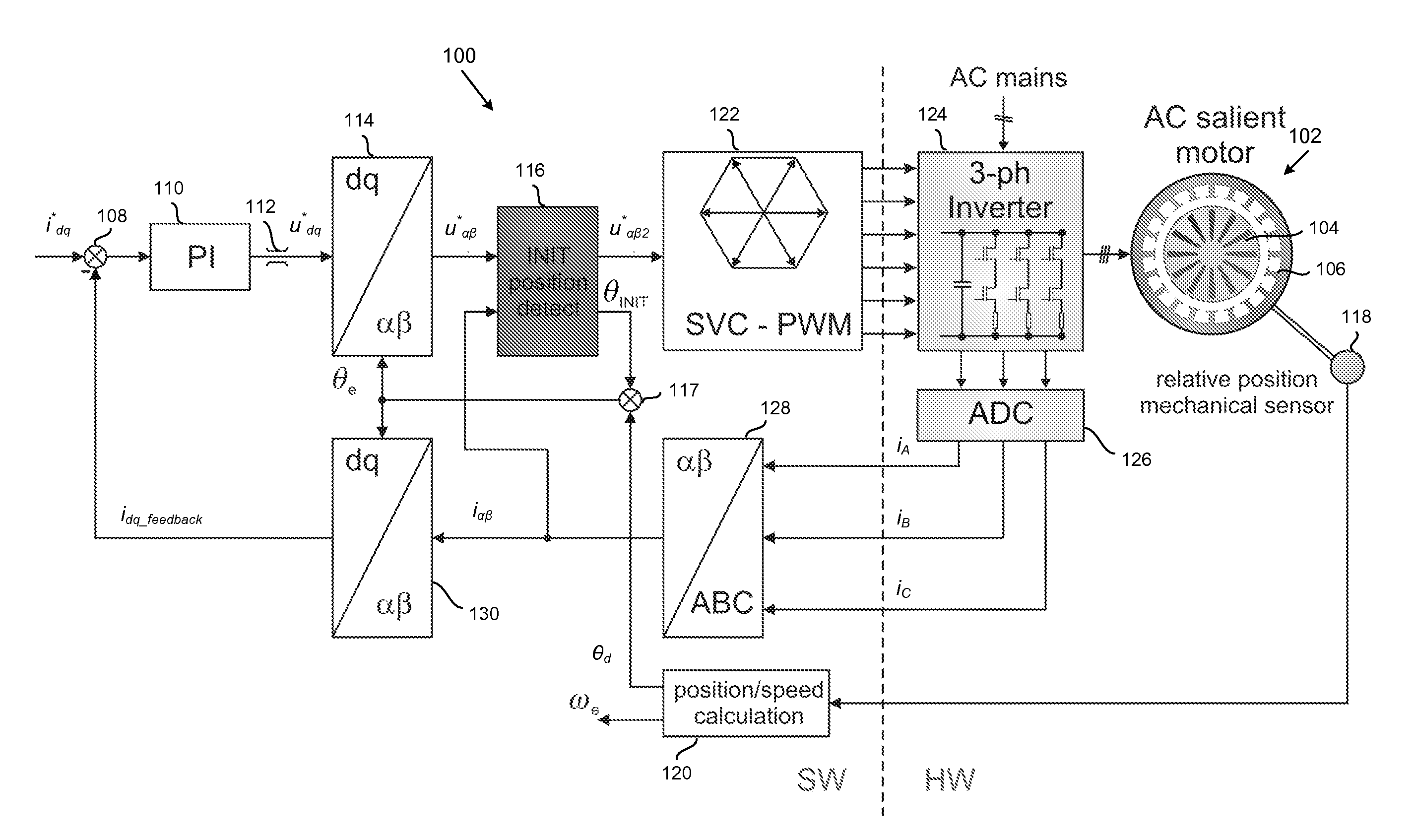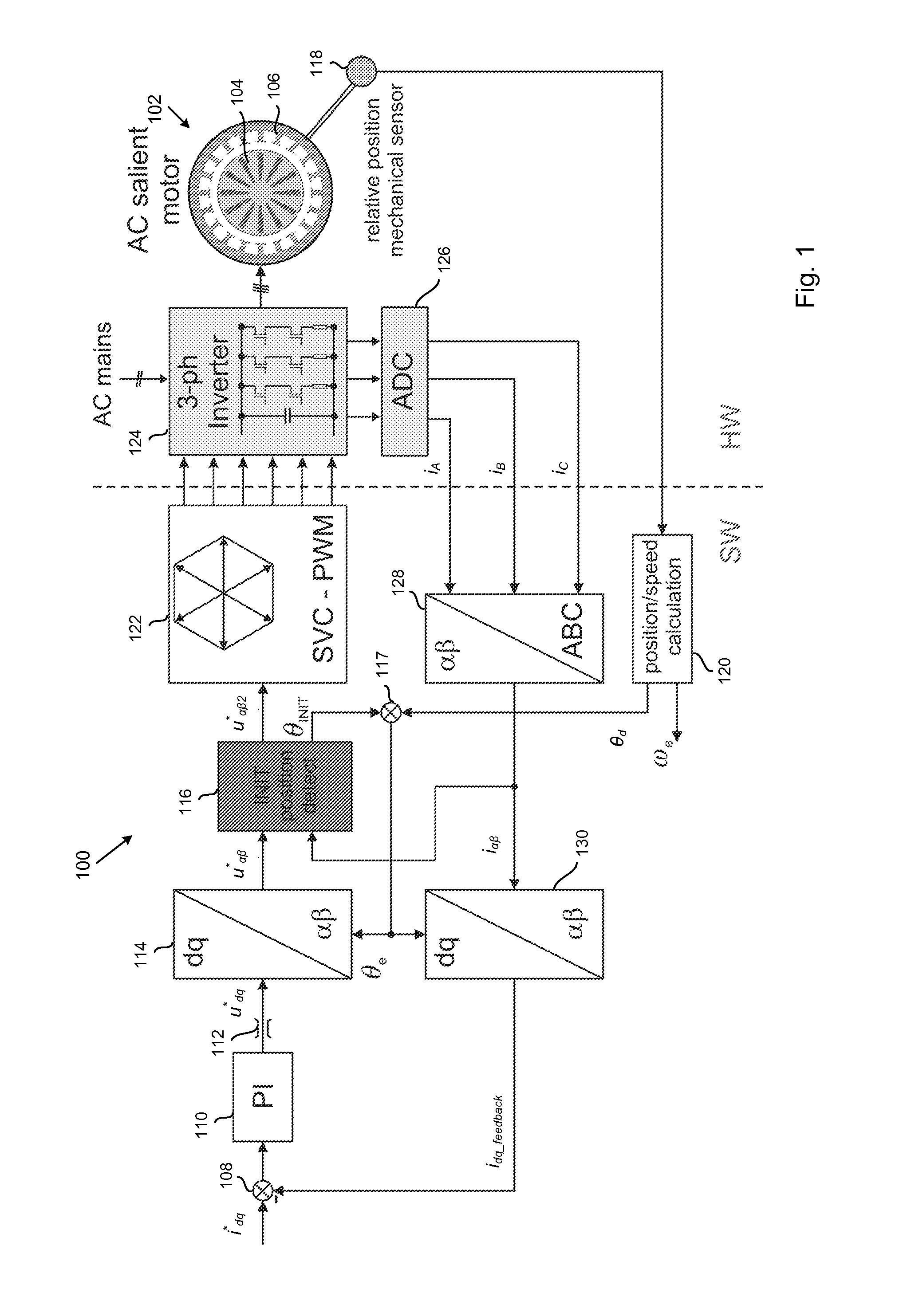Determining initial rotor position of an alternating current motor
a technology of alternating current motor and initial rotor position, which is applied in the direction of motor/generator/converter stopper, electronic commutator, dynamo-electric converter control, etc., can solve the problem of increasing the size, weight and complexity of the ac motor system, insufficient back electromotive force (emf) generated in the motor to enable an accurate estima
- Summary
- Abstract
- Description
- Claims
- Application Information
AI Technical Summary
Benefits of technology
Problems solved by technology
Method used
Image
Examples
Embodiment Construction
[0016]The present disclosure will be described with reference to a 3-phase Permanent Magnet Synchronous motor. It will be appreciated that the disclosure is not limited to use with a 3-phase Permanent Magnet Synchronous motor and may apply to any AC motor with saliency, for example 2-phase AC motors, wound-rotor AC motors, a permanent magnet motor with the permanent magnet buried in the motor or surface mounted, a Synchronous Reluctance Motor (SynRM), a Switched Reluctance Motor (SRM), or an AC Induction Motor (ACIM).
[0017]FIG. 1 shows a controller 100 in accordance with an embodiment of the present invention for an alternating current (‘AC’) salient electric motor 102 which has a rotor 104 and a stator 106. The controller of FIG. 1 calculates values in direct (‘D-axis’) and quadrature (‘Q-axis’) coordinates which rotate relative to the stator before transforming the values to α, β angular coordinates that are static relative to the stator and which in turn are then transformed to s...
PUM
 Login to View More
Login to View More Abstract
Description
Claims
Application Information
 Login to View More
Login to View More - R&D
- Intellectual Property
- Life Sciences
- Materials
- Tech Scout
- Unparalleled Data Quality
- Higher Quality Content
- 60% Fewer Hallucinations
Browse by: Latest US Patents, China's latest patents, Technical Efficacy Thesaurus, Application Domain, Technology Topic, Popular Technical Reports.
© 2025 PatSnap. All rights reserved.Legal|Privacy policy|Modern Slavery Act Transparency Statement|Sitemap|About US| Contact US: help@patsnap.com



